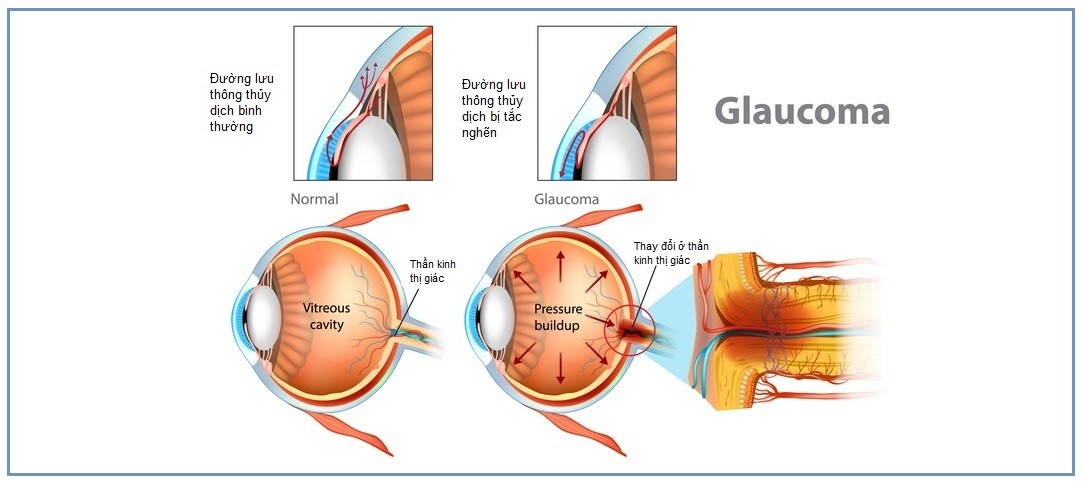Glaucoma
- Primary glaucoma
- Primary closed-angle glaucoma (common in Vietnam)
- Primary closed-angle glaucoma with pupillary block
- Acute closed-angle glaucoma
- Semi-acute closed angle glaucoma
- Chronic closed angle glaucoma
- Primary closed-angle glaucoma without pupillary block
- Primary closed-angle glaucoma with pupillary block
- Primary open-angle glaucoma
- Primary closed-angle glaucoma (common in Vietnam)
- Secondary glaucoma

- Hereditary factor
- Aging – those of over 50 years old are at a higher risk of glaucoma.
- Recorded eye diseases such as complications of diabetes, eye infections such as uveitis, etc.
- Eye injuries
- Side effects of frequent usage of corticosteroids
- Complications after eye surgeries
- Race – the Southeast Asian and the Afro-Caribbean are more susceptible to different forms of glaucoma than the others.
- Acute primary closed-angle glaucoma
- Semi-acute primary closed-angle glaucoma
- Chronic primary closed-angle glaucoma

3.1.2 Primary open-angle glaucoma
It typically comes with no obvious symptoms, except in the case of severe damage on the visual field. Hence, it is often not detected in early stages. Many patients know their condition by accident.
Most patients only feel slightly tight eyes or a slight blurred vision when working involves too much eye use, nervousness or worrying.
3.2 Secondary glaucoma: appears after disorders in the eye and body, such as glaucoma caused by injuries, uveitis, lens pathology, etc.
- Those of over 40 years old
- Those with family members having glaucoma
- Those with refractive errors: nearsightedness of over 4 diopters, early presbyopia, quickly increased presbyopia level.
- People with systemic diseases such as high blood pressure, nocturnal hypotension, spasm in coronary disease, Raynaud’s syndrome, cerebral circulation disorder, migraine, hyperlipidemia, diabetes, thyroid disease
Glaucoma treatment is carried out to stop or slow down its progression, maintain the vision and the living quality for the patients. Depending on their condition, the patients with glaucoma may be treated in various ways, including:
- Treatment with prescription eye drops, oral medications, infusion therapy to lower the eye pressure
- Laser treatment: Laser Peripheral Iridotomy, Peripheral Iridectomy, iris shaping by laser, Laser Trabeculoplasty, Selective Laser Trabeculoplasty, laser photocoagulation of the ciliary body.
- Surgery: Trabeculectomy, Fistulotomy, Non penetrating deep sclerectomy, Aqueous Shunt Implantation in the Anterior Segment.
The prognosis depends on the glaucoma conditions and stages when the patients visit the hospital for examination and treatment. If not treated promptly, the damages of the optic disc and visual field may adversely progress to irreversible blindness. If detected and treated early, with proper regimen and regular monitoring, the risk of blindness can be avoided. Treatment of glaucoma requires a long process, and the patients should follow their prescribed treatment regimen to be able to control the disease progression and avoid dangerous complications.
